Backpacking in the Bob Marshall Wilderness
< VIDEO: Retrace Bob Marshall's 1928 trek viewed from the Chinese Wall. The wilderness now bears his name.
Encased in a down sleeping bag, I wriggle a bit to readjust the pile of clean clothes contained within the pillow case beneath my head. Water droplets collect at the top of the dome above me and spill down nylon slopes to the ground, the intensity waxing and waning. Good morning, Bob Marshall Wilderness, I think to myself.
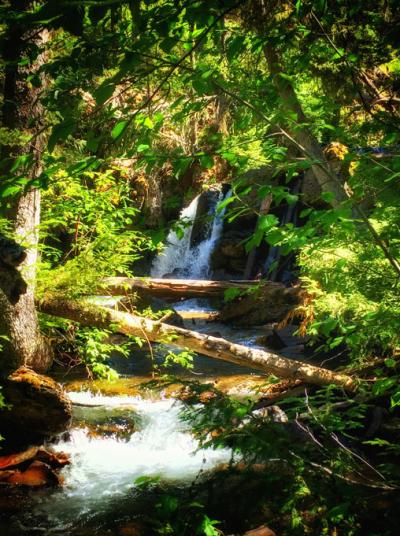
Originally established in 1941, the Bob Marshall Wilderness Area was named in honor of the late Robert Marshall, a strong wilderness preservation advocate and member of the Forest Service. Now encompassing over 1.5 million acres, this area harbors a trove of natural treasures for generations to come.
This time my journey included my husband and my 16-year-old son. My stepfather (now known as “Grandpa David”) is our humble leader, both on the trail and in determining our route. He pores over maps in search of interesting trail intersections with regular water access. I search for the most captivating photographs of lakes, waterfalls, peaks and panoramic views before turning to the map to determine how we might best witness them for ourselves. Somewhere between his patient logic and my eagerness to scale multiple mountaintops lie the ultimately decided routes for our yearly expeditions into the pristine Bob Marshall Wilderness Area.
DAY ONE:
Holland Lake
to Upper Holland Lake
(6.75 miles)
For this year’s trek, we opted to access the wilderness via Flathead National Forest’s Holland Lake North trailhead, located approximately 25 miles northwest of the tiny, bustling town of Seeley Lake.
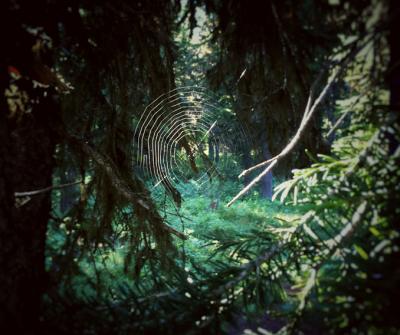
Despite the weight of our packs (mine weighed in at just 37 pounds this year), we were rested, fed and energized for our adventure. It is easy to feel invincible on the first day of a backpacking excursion.
After bordering the northern side of Holland Lake, the trail began to rise from the Swan Valley, offering sweeping views of the forest surrounding the lake’s emerald water below, and a vast carpet of green extending to the snowcapped Mission Mountains on the western horizon.
We wove on through the valley, Holland Lake Trail repeatedly greeting us with cascading waterfalls, until we reached our day’s endpoint at Upper Holland Lake.
DAY TWO:
Upper Holland Lake
to Gordon Creek
(5.9 miles)
After shaking morning rain from our tents, we set out upon the leg of the trip I most anticipated. This was the day we would stand witness to Ptarmigan Peak — the muse that had captivated my attention and drawn me to this area of the wilderness.
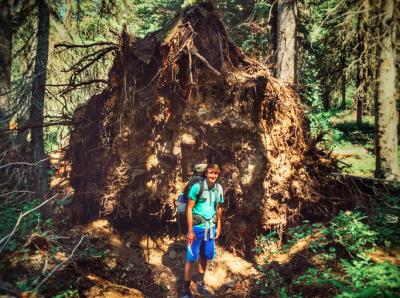
From the west bank of Upper Holland Lake, we crossed over the Swan Range, finally entering the Bob Marshall Wilderness via Gordon Pass. Suddenly, we were thrust into the daunting grandeur of Ptarmigan’s presence. Below its sheer rock wall, fed by snow which never fully melts away, the mountain cradled the blue-green waters of Lick Lake. The juxtaposition of an infantile loch being protectively embraced by sharply twisted rock is a true marvel of nature — a scene both commanding and intimate.
During our descent into the Lick Creek Valley, we met numerous hikers whose adventures had been defeated by the unusually high, swift waters of Gordon Creek. We opted to press onward, and that evening nature rewarded our effort by providing an idyllic camping area near the creek’s edge.
Bathing in the frigid waters of the mountainous wilderness is not for the faint of heart. Audible gasps, momentary motionless shock and a fair amount of floundering about ensued, but none of us could deny the invigorating results or the contented sleep which followed.
DAY THREE:
Gordon Creek to Lena Lake
(6.3 miles)
Despite the smoke from our campfire, a persistently curious mule deer doe greeted us during our morning coffee, while Grandpa David and I discovered that an unseen, more mischievous woodland creature had chewed through essential portions of our hiking boots during the night. Boots haphazardly repaired, we began our day’s trek.

As the trail traversed wooded mountainsides, we quickly realized our travels would be more difficult than anticipated. According to other travelers, spring storms in the area brought winds up to 108 miles per hour, toppling impossibly tall trees and thereby blocking large sections of trails. Often times, the root systems retained soil and boulders as they fell, creating gaping holes throughout the forest. The more remote our location became, the more “blowdown” we encountered.
After miles of navigating fallen timber, we stumbled wearily onto the bank of Lena Lake. The water’s surface was as smooth as glass, save for countless breaching fish. Having reached our deepest point in the wilderness, the scene could only be described as pristine.
DAY FOUR:
Lena Lake to Pendant Pass
and Upper Holland Lake
(7.4 miles)
It’s peculiar how easily the wilderness begins to shape us once we remove ourselves from civilization. There is vulnerability in being in such a remote area, but also a sense of serenity and belonging. Our internal clocks begin to sync with the sun. We eat only when we are hungry. The sound of deer walking throughout camp during the night becomes commonplace; and they are definitely not as stealthy as one would expect.
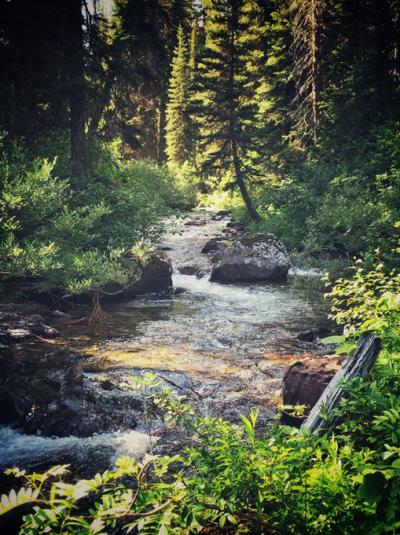
If I have found anything with the ability to shatter the peacefulness of my unity with nature, it is the sound of a bear’s roar as it echoes across Lena Lake. With the power to make us all halt mid-conversation to stare in awe and sudden awareness, it didn’t precipitate a feeling of fear so much as it instantly demanded respect. We packed up camp much more quickly than usual on that day.
Moving northwest to Pendant Cabin, then southwest along Pendant Creek, the trail alternated between silent forests and meadows sprinkled with pollen-drunk bees. Wildflowers were most prevalent on this stretch, and we encountered substantially less blowdown than the day previous.
The trail wove along the three Pendant Lakes before a final crossing of the Swan Range — this time via low-lying Pendant Pass. Standing high above Upper Holland Lake once again, we officially exited the Bob Marshall Wilderness for another year.
DAY FIVE AND SIX:
Upper Holland Lake to Holland Lake
(6.75 miles)
We spent two nights at Upper Holland Lake before returning to civilization below, doing little more than enjoying time together and reflecting on our shared experience.
Introspection occurs most freely when we are at rest, and our journey provided me with even more appreciation for the natural wonders surrounding me. To understand Big Sky Country is to explore its vastness, and I have found no better place to learn about our great state — and myself — than while backpacking in the Bob Marshall Wilderness.
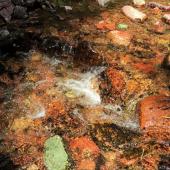
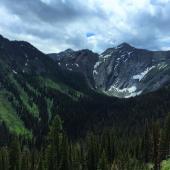
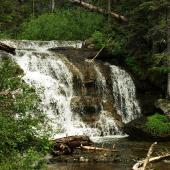
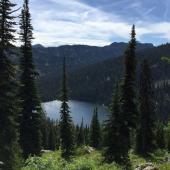

WORD OF ADVICE:
Although Upper Holland boasts several established campsites, it can become a busy place on the weekends. To ensure the greatest likelihood of site availability, plan to stay during the middle of the week. Plan a route which allows for flexibility should you encounter unforeseen issues. Take care to preserve the backcountry by leaving no trace of your presence. Pack garbage out, and restore the condition of temporary campsites prior to departure.
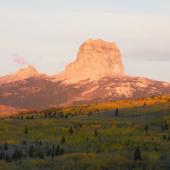

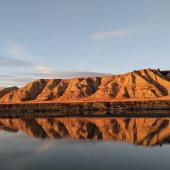



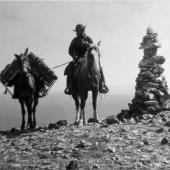





Leave a Comment Here